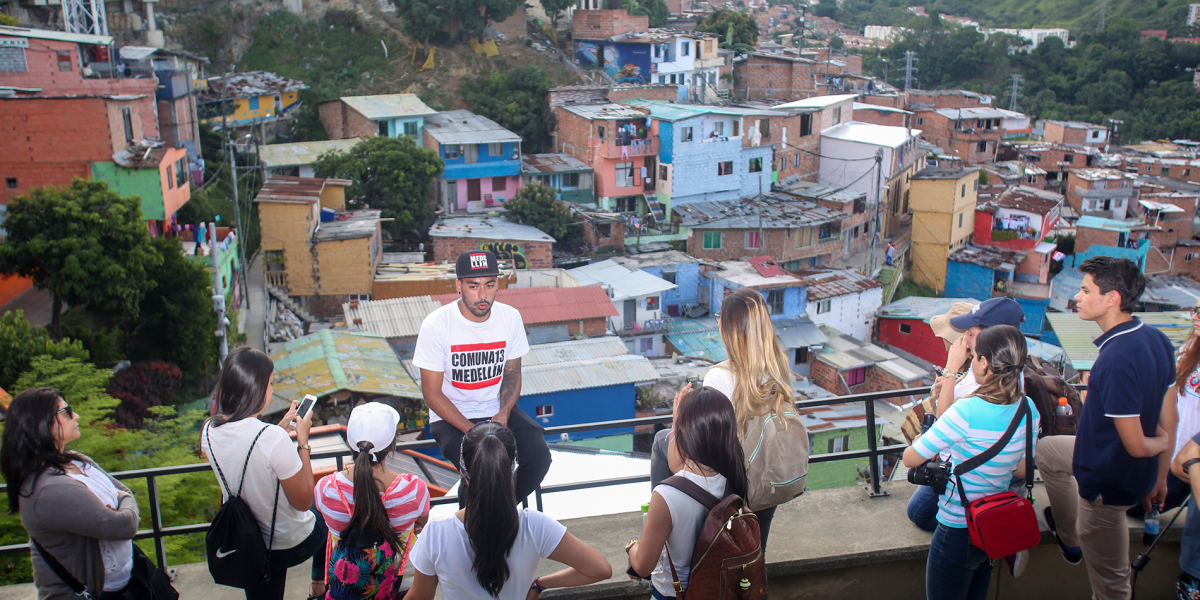
Solving a community’s problem: The dilemma between quantitative and qualitative research methods
A few years ago in “Ciudadela de Occidente”, a social housing solution in the outskirts of Medellín, researchers found a family running their butchery business in their 35 square metres flat located on the 2nd floor of a residential block. Similar stories are reported by researchers over and over when doing surveys or qualitative research on these type of housing solutions.
Colombia´s legal framework includes communities’ participation as a critical feature in policy-making processes. The Political Constitution of 1991 established decentralization as a strategy to make the government closer to the citizens. However, this implementation strategy has only been partially successful. There are still many challenges to overcome, and one of these is the housing solutions for the displaced populations in the country’s major cities.
The reality is that social housing solutions for displaced populations in Colombia very often fail. Many commentators suggest the main reason for failure is the technocratic approach used to engage with this problem. These settlements are often (if not always) located at the margins of the urban areas, disconnected from appropriate social services and they do not provide the basic necessities for their inhabitants. Through participatory action research methodologies, researchers from different local institutions have found out that these housing solutions are developed without proper investigation of the wider social context. When a complex multidimensional issue such as housing is tackled only from a quantitative approach, the results can be disastrous.
Considering that the PEAK Urban Project focuses on multiple problems that the informal settlements in the Global South face, we (the postdoctoral PEAK team from EAFIT) met to discuss the advantages and disadvantages of ‘action research’ as a methodology for our projects. While qualitative and quantitative methodologies are valid to tackle urban problems, we argue that they should not be mutually exclusive, but rather complementary. As a multidisciplinary team this is critical if we are to understand the challenges facing our research subjects.
In action-based research, the researcher doesn’t provide guidance, doesn’t aim to isolate the community problem from the environment, and its role is mostly passive as the solution is expected to come from the community itself. These premises seem counterintuitive from a quantitative perspective, where the researcher is expected to isolate the problem from external circumstances, understand its behaviour, model it, search for an optimal solution in a specialized corpus of knowledge, and then, to propose a course of action.
An important issue to highlight here is the disconnection between the “optimal solution” and “ community-based solutions”. “Optimal” is defined according to a set of criteria chosen by the researchers. At this point analytic researchers often draw a thin line between “optimal” and everything else, sometimes adding bias to the quantitative results without noticing.
When working with the Bogotá City Hall to map and characterize community and alternative media outlets (such as community radio) across the city, we as researchers proposed a classification scheme that worked best from our perspective. But some people from the media outlets did not identify themselves in that scheme and felt as if we were excluding them from the survey or giving them less importance than they deserved. It is the work of researchers to understand the community needs, and it is very important that they distance themselves from their own views to let the community voice to be heard instead of his/her own beliefs.
In recent years, policy interventions are based on evidence that comes from the combination of quantitative and qualitative methods. Although there are tensions between the two perspectives, scholars have found complementarities. This is not the easiest path for the implementation of a specific policy; however, it increases its validity and its likelihood of happening. The quantitative analysis of relevant urban phenomena provides valuable inputs for the formulation of public policies and for the implementation of technological solutions. It offers prediction possibilities that help to design measures to address urban problems and achieve collective goals such as SDGs. However, as cities aim to become more inclusive and equal, qualitative approaches (e.g. participatory workshops) can help to understand smaller groups and answer questions about experience, meaning and perspective or detect potential problems in the implementation of proposed policies or regulations on particular members of the population.
Connecting the action research with PEAK's goals, the interaction between analytic and social-driven research is critical to 1) understand communities, their problems, and local constraints, 2) collect field data, 3) build better models, and 4) assess practical applicability of solutions within the communities.
Qualitative and quantitative approaches both seek to answer different questions. As the complexity of human living spaces increases, the ways in which we intend to understand them must be flexible, multiscale-able, and multidisciplinary. Qualitative and quantitative research can and must work together if we want to make our cities inclusive, safe, resilient and sustainable.